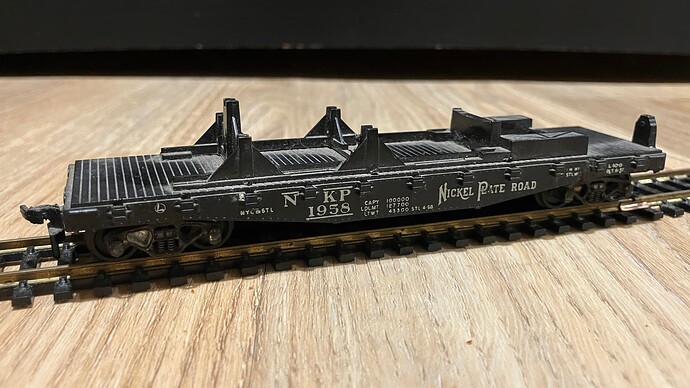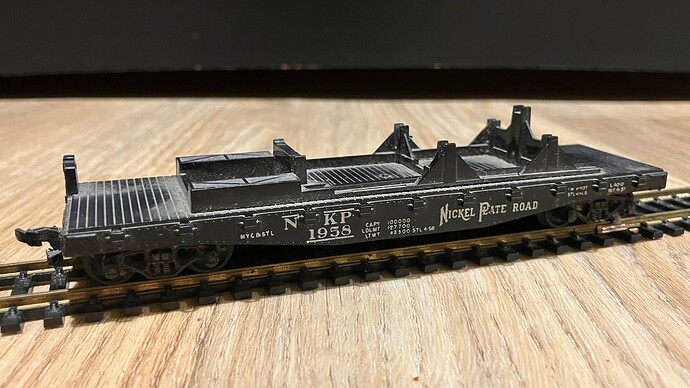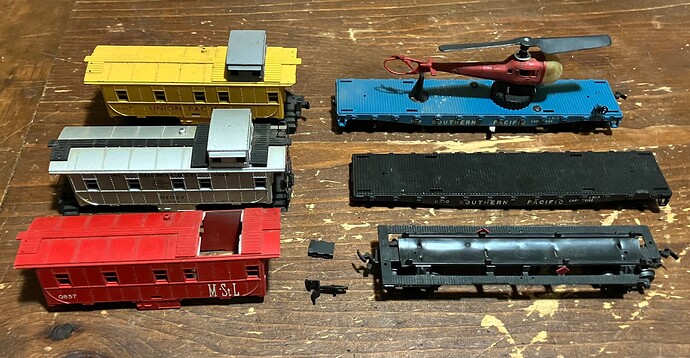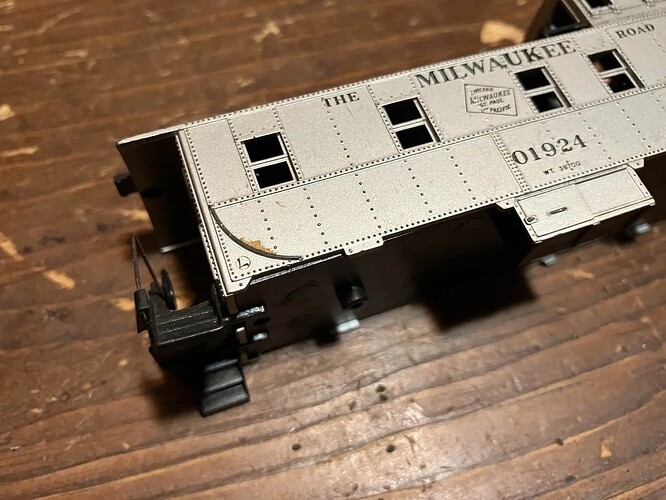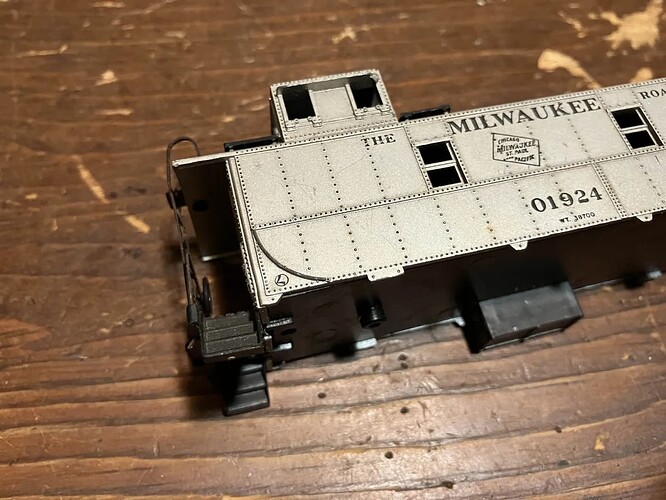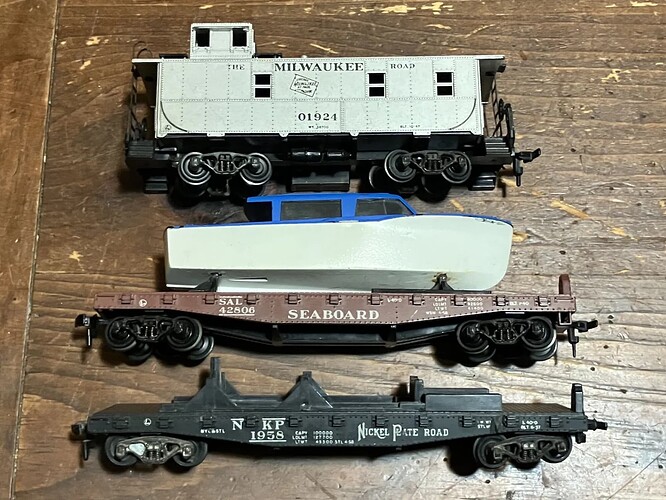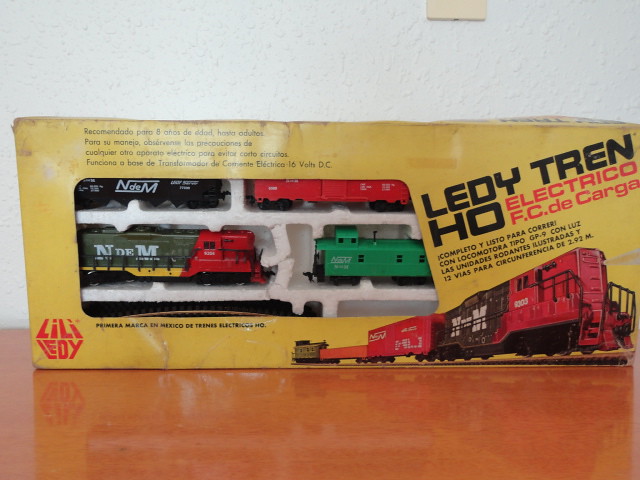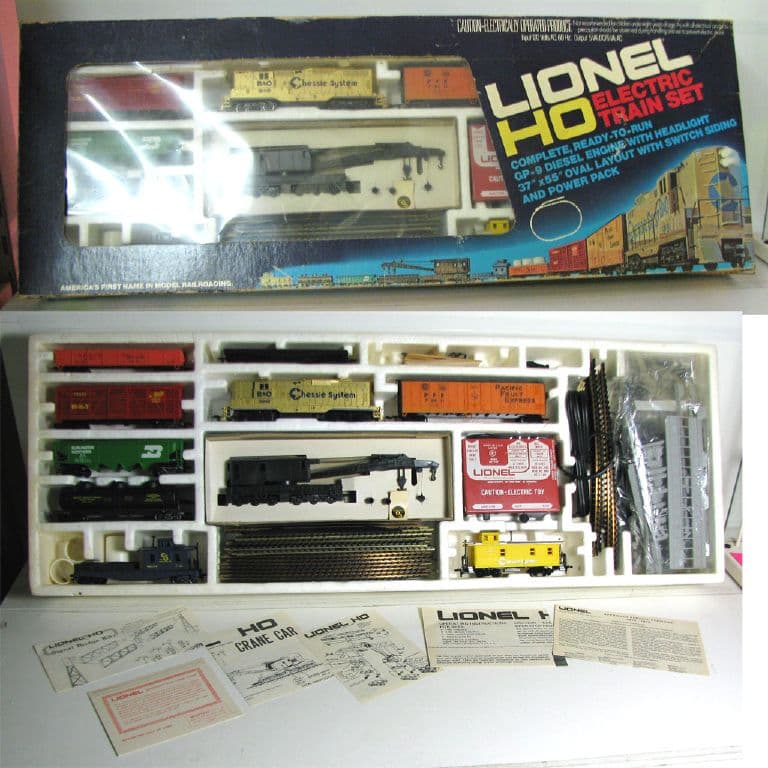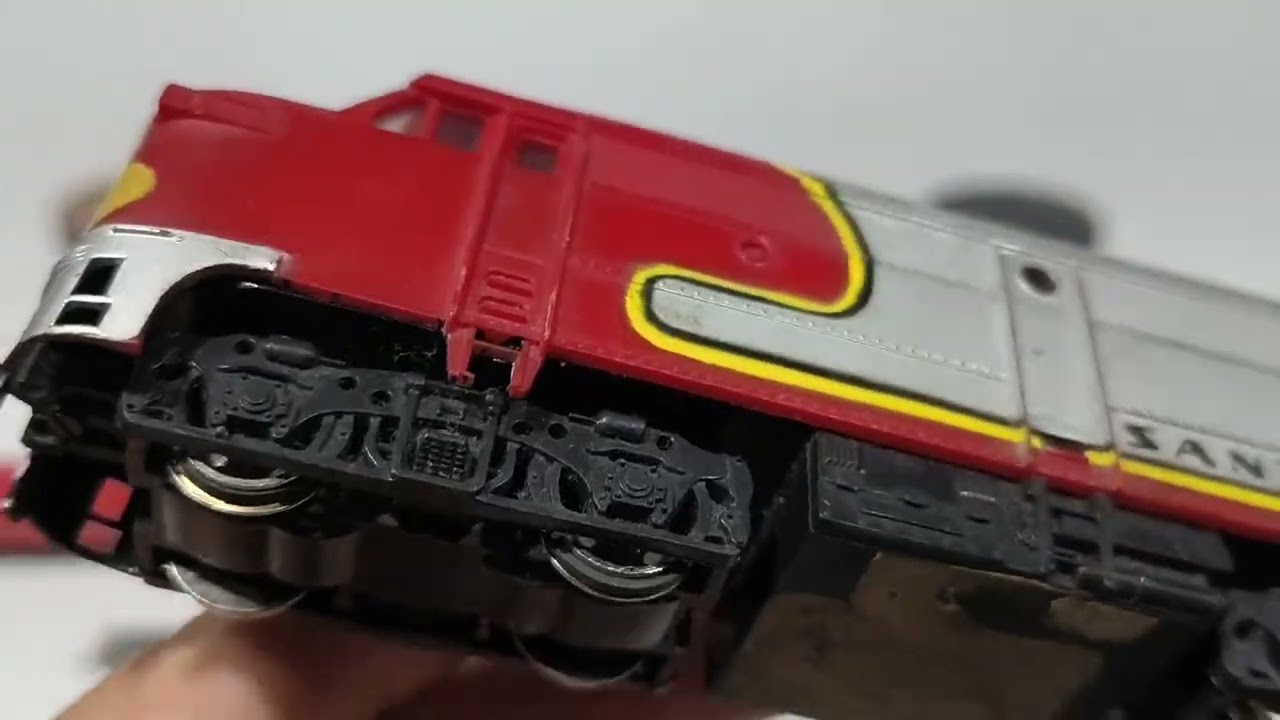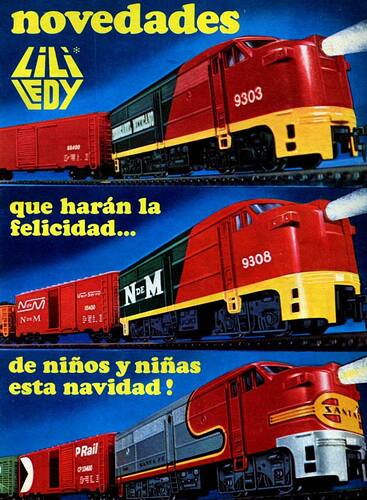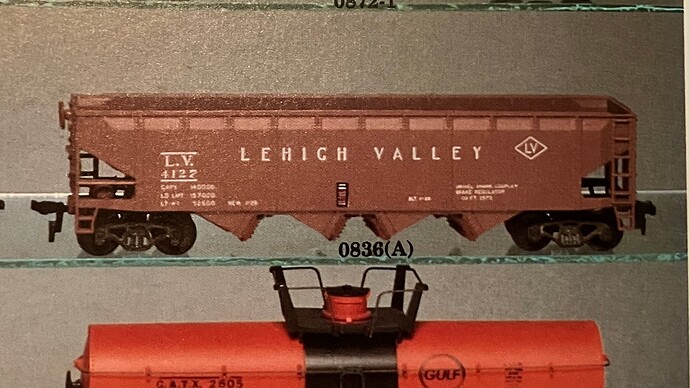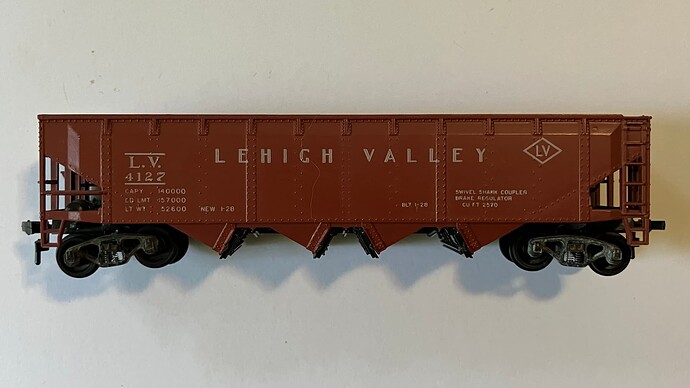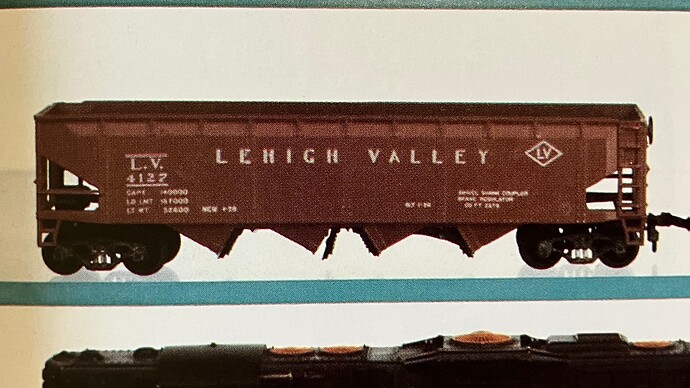Two day shipping? ![]() Did your neighbor walk it across the street to you?
Did your neighbor walk it across the street to you?
Yeah, crazy right? It was shipping from within the northeast, but personally I think I just got extremely lucky.
-El
It’s an old gripe of mine, but it’s always stuck with me. It always bugged me that I had to pay crazy shipping costs and wait 2 or 3 weeks for Olsen’s to ship train parts from Lakewood to Parma Heights, a distance of about 5 miles, instead of just letting me come and pick them up. ![]()
Been a minute since I made a post to this thread.
This summer has been a good one so far for finding new Lionel HO rolling stock.
This 0800 Airplane Flatcar may be missing its load, but it cost me a mere $2. While at first glance it appears to be a generic, commonplace Athearn car, a closer examination reveals the Lionel ‘circle L’ logo stamped onto the side. Note the logo appears to be missing from one side- it definitely was stamped on both sides, but one side seems to have gotten rubbed off. Only a subtle little white mark remains.
Any standard Athearn aeroplane will fit the car, but a “correct” load would have a black underside and either a yellow or silver topside.
Now, finding one Lionel HO car produced by Athearn is cause for celebration to be sure. But what about two? I picked up a variety of cars in parts/repair condition…
Starting with the cabooses, we have a standard 0837 M.&St.L. shell, less coupla- no collector value here! But it may come in handy for a repair or a kitbash one day. The other two are a different story…
The 0817-325 Union Pacific is a diamond in the rough. The chassis is wrecked, the trim parts are missing, the couplers are gone, and only one truck remains. It’s a miracle I was able to find the coupla stuck to a different caboose in the same junk bin it came out of! The 0817-325 was a non-catalog item from the early 60s, and is tough to locate. I will eventually use a donor car to repair my example.
The 0817-1 is no less difficult to find- like the 0800, this car was produced by Athearn, and is distinguished from the ordinary, common Athearn car by a tiny little Lionel logo stamped on the side.
Available only in 1958, the car was a component of catalog outfit 5709, as well as being available for seperate sale. Despite being the only 1958 caboose listed in the separate sale section for HO rolling stock, it does not appear to be noticeably more common than any of the other 1958 cabooses supplied by Athearn. As-found, mine was missing the smokestack, one ladder, the weight, and the entire underframe. Fortunately, I had a few common Athearn cabooses that could provide donor parts to mostly complete the car. Here it is, alongside my 0801 and 0800:
As for the remaining three new cars, none are pristine, but all are nice to have-
the 0319 may be a mess, but it has the original copter. The supply of repros has pretty much dried up, and there’s no shortage of 0319s that are missing their helicopters. The value is in having an undamaged car, complete with its helicopter.
The 0810 carried a 6520-17 Generator from the O gauge line. It was held down with an elastic band originally, so fairly unusual to ever find one with the original load. I will eventually pick one up to complete my car. I don’t think it’s a rare car, but not an extremely common one either. It was missing a truck as-found, but I have already replaced it.
Lastly, the 0842 Culvert Pipe transport car. I have been looking for one for a while. It is made using the chassis for the HO tank car, and carried three 342-40 culvert pipes from the O gauge line. Again, not a rare car, but not the most common either. Mine is damaged, but still usable, just cosmetically flawed.
Anyhow, that’s all for now. I plan to post some more in-depth commentary on some of these cars. I have been feeling strongly that the research compiled across the Greenberg Lionel HO guides is flawed- the authors did a wonderful job, and of course the internet had yet to happen at the time. That said, I think a closer study of various items and establishing a chronology of changes across the HO line was never really done, and could make a big difference in accurately narrowing down when certain items were made. I need to start documenting all my observations and writing them down!
-El
![]()
A remarkable development!
Last night I stumbled upon something that may be exciting to anyone else who collects Lionel HO products from the MPC era, not just the postwar era.
in the 1970s(?), a Mexican brand known as “Ledy”, sometimes also called “Lili”, offered a line of HO train sets and possibly also separate sale items.
The curious thing though, is first, the look of the packaging. Have a look at this boxed set, shared by Flicker User coolma68:
Now, have a look at this Lionel HO set shown on The Train Station’s website:
The resemblance is striking, isn’t it?
But the similarities run a little further than that. Looking at pictures of LEDY locomotives and rolling stock, there are some certain details that stand out- for instance, the cabooses have molded-in catwalks, as opposed to separately applied ones. This caboose is based off a Santa Fe prototype, and has been made by many companies- but most manufacturers produced them with seperately applied catwalks. Afaik, only Fleischmann and Lionel produced versions with a catwalk as part of the body mold, and the two brands are easily distinguished from each other by various details (trucks, battery box, smokestack, how the body attaches to the chassis, etc)
The hopper cars appear to have missing rivet patterns in the same places as my Lionel HO hoppers from the MPC era, which were produced using updated postwar 0836 hopper car dies. And the boxcars use claw-foot doors, which are not unique to Lionel, but do match up with the Lionel-made MPC era boxcars that were produced using tooling that originally produced the 0874 boxcars of the postwar era.
The diesel locomotives seem to match up with Lionel’s ALCo FA and GP7/9, right down to the same plastic horns with square ‘pegs’ that mount into the loco bodies.
Now… this all might still be conjecture with the above evidence, if not for one more important detail- apparently, the locomotives sold by LEDY say Lionel on the bottom! Don’t take my word for it though…
So… this is quite interesting. The question I have, is- how were Lionel and LEDY involved? Did LEDY contract with Lionel to produce their trains, or was something else going on? The quality of the graphics is not universally good, or in keeping with Lionel’s decoration techniques of the time, which adds another layer of mystery.
Regardless, it does make one thing clear- previously, I only knew of 2 liveries it was possible to find the 0836 style hopper car in- Burlington Northern, and Rio Grande. Now I know that there are at least 2 or 3 more liveries, and they were, it appears, Mexican exclusives, along with several other pieces of rolling stock and locomotives. I am intruiged… and wishing I could get my hands on some of these items.
-El
They SURE look like Lionels to me, right down to the packaging.
Someone’s who’s a Lionel HO expert would have to sound off on this but let me venture a guess. My guess the LEDY name was to get Lionel around some kind of national tax on foreign companies. I can’t think of another reason that would make sense.
Some further research seems to provide the answer- Wayne, you didn’t guess right, but you were close in a way!
LILI LEDY was a major toy company in Mexico. Like, seriously major. They were, it seems, as much a household name in Mexican toys as Louis Marx was for US toys.
LILI LEDY’s bread and butter was a response to trade restrictions not allowing the sale of toys that were made outside of Mexico- the company specialized in licensing popular toy lines from the US, and producing them in Mexico for the Mexican market. Something they were highly successful at!
So, clearly it seems the branding was a direct result of foreign trade law- the trains had to be a Mexican product, not a product imported from the USA.
But where is the Lionel connection? Why did LILI LEDY choose to offer Lionel HO trains? The answer to that, I believe, is the fact that in 1975, LILI LEDY was bought by… General Mills! Yes, that General Mills, the same one that owned Lionel MPC in the 1970s and early 1980s. Lionel MPC’s new HO Line had only just made its debut the year before. It seems like General Mills thought that a train line would sell in Mexico, and decided to have train sets made for the Mexican market.
Unfortunately, it didn’t go well- neither the new Lionel HO line, nor General Mills’ ownership of LILI LEDY. Lionel MPC discontinued the US line of HO trains after 1978, a run of only 5 years. Did the Mexican line last longer? I would love to know. As for LILI LEDY, the company ceased operations in 1985. I found some reference that there was maybe a dispute between unionized labor trying to get higher wages and benefits from General Mills, and General Mills being unable or unwilling to meet their demands. Whether this is true or not, I don’t know.
General Mills must have had it with their non-cereal operations by the mid '80s, iirc 1985/1986 was also when the MPC era of Lionel ended, with Richard Kughn buying the company.
I definitely want to see if I can learn more, but this is already pretty exciting to have worked out. I wonder if the Greenberg Guide to Lionel MPC HO has any information on the LILI LEDY product line.
-El
Hey, if I didn’t hit the bulls-eye at least I was in the 8 ring! Or the 7 ring. Or something. ![]()
A great bit of research Ellie! Well done! ![]()
One more piece to add- a comment on a YouTube video had me do a little more looking, and it appears the LILI LEDY train line likely appeared after the Lionel HO line concluded. The 1979 LILI LEDY catalog’s cover artwork does suggest that the trains were new for that year… and something to get excited about!
I machine-translated the text, and it says something along the lines of:
new products
that will make the happiness…
of boys and girls this christmas!
The YouTube comment that lead me to looking into this mentions a catalog from 1980, so presumably the LILI LEDY HO train line carried on at least another year.
It appears that unlike the US line, which featured equipment manufactured by a variety of makes, and using different tooling, the Mexican product line was mostly if not exclusively produced with Lionel dies. The MPC products using Lionel’s own dies are my preferred MPC items to collect, so these Mexican products are especially of interest to me- there were a few overlapping items from the US line like the Rio Grande hopper, and the Union Pacific GP7/9 and its matching caboose. But most of the liveries I’m seeing were never offered in the US line.
I will have to start compiling a list of everything I can find pictures of!
-El
Uh Oh! ![]()
Rich
The Elusive 0836 Hopper… Facts Or Rumors?
I just recently arrived back from a trip to Maine with my family. I returned with many nice memories to treasure, as well as an assortment of spoils for the train collection!
Today I would like to discuss one of these new pieces in the collection, and how it relates to a greater frustration/difficulty in the field of collecting Lionel HO.
One of the most readily available cars for the Lionel HO collector to seek is the 0836 Alaska Railroad hopper. Introduced in 1959 as a black car with yellow lettering, Lionel would soon change the car to red with white lettering- exactly when the change happened, I am not certain, but 1961 or 1962 seems likely. The red version would remain through the end of Lionel HO in 1966.
But what about the other 0836 hopper?
Before 1959, Lionel’s HO products (except for transformers) were entirely produced by other manufacturers. In 1958, Lionel released the 0836 Lehigh Valley hopper, produced by Athearn. This relatively drab, brown 4-bay hopper had standard features of Athearn production for the time- a seperately applied plastic brake wheel, steps and ladders molded into the plastic body, steel under frame weights, and sprung metal trucks with plastic wheels. The hatches on the underside of the hopper open and close.
For better or for worse, the 0836 Lehigh Valley is an extremely tough piece to find, easily among the rarest of the Athearn made Lionel HO pieces. So what makes this car so rare, and how do you identify an authentic, original example?
A point of difficulty with collecting the Rivarossi and Athearn pieces produced for Lionel, is that they do not say “Lionel” on them, and except for a few passenger cars, none bear Lionel catalog numbers. Most pieces made for Lionel were marked with a small “circle L” Lionel logo, but some were not.
While this is less of a problem with the Rivarossi pieces, where subtle changes can distinguish most Lionel versions from regular Rivarossi production, it is a big issue for the Athearn pieces, where Athearn marketed identical items in its own line. Most items for Lionel were stamped with the ‘circle L’ logo, but some were not. A real pain for the collector!
Greenberg’s Guide to Lionel HO 1957-1966 lists two variations of the Lionel 0836 Lehigh Valley hopper
Variation A has no Lionel logo- the guide claims this car is “found in early Lionel sets”.
Variation B has a 1/16" Lionel logo stamped on the side- this variation is noted by the guide to be “very difficult to find”.
The guide illustrates only one of these variations, variation A. However, I take some issue with the piece chosen for the photograph.
Looking closely at the pictured car, one can clearly see a KarTrak decal applied to the side, directly below the last ‘H’ in “Lehigh”.
KarTrak was a technology developed in the 1960s to help track freight cars across the national rail network, and for a time, was implemented widely across the US rail network under the enforcement of the AAR.
Obviously, a technology that emerged in the 1960s could not have been applied to a model railroad car made years before the real thing. So, clearly someone altered this piece at some time or another- not an unusual thing. But this is where things get confusing- note that the pictured car also has brown painted hatches, a brown air reservoir, and a brown brake wheel!
Compare that with the following car, purchased yesterday by yours truly:
For all intents and purposes, the above car can be considered regular Athearn production. There is no provenance or peripherals of any sort to suggest it is a Lionel piece, therefor it cannot be distinguished from a common Athearn car. But note the black hatches and brake reservoir. The brake wheel is gone, but appears to have been black.
This raises the question of if the brown hatches and detail parts on the car in the guide book are authentic, or if they were painted brown by whoever applied the KarTrak decal. I suspect the latter.
The guide book also illustrates this car in a later section:
Hard to make out, there is a small logo stamped in the bottom right corner of the car side. This car is an example of a “faked” Lionel HO piece- the L in the logo does not match that of Lionel’s, but according to the book, it was passed off as an authentic Lionel piece to a collector.
I would finally like to circle back to the guide book’s description of “Variation A”- One additional reason why the 0836 Lehigh Valley may be as rare as it is, is that it was not a component of any catalog train outfit that was produced. Lionel had planned to include the car in 1958 outfit 5717, but this outfit was never produced- it was to be headed by an impressive 4-6-2, but Athearn experienced issues with its development and the locomotive was not ready for production until a few years later. Considering this fact, the guide book’s comment on this variation coming in “early sets” does not add up- after all, the only catalog outfit it was slated for never made it into production!
The lack of inclusion in train outfits, combined with few (if any) cars actually being marked with a Lionel logo, has rendered the 0836 an extremely tough piece to come across. Considering how tough the Lionel car is to find, I decided to pick up my Athearn car as a ‘stand in’- it is more or less identical to the Lionel version, and the odds of finding a verifiable original are slim. Why not?
I hope this post helps illustrate some of what makes Lionel HO (particularly early Lionel HO) such a fascinating and interesting niche to collect- and also why a number of pieces are so darn tough to find!
-El
The first car illustrated has a different casting, and the lettering does not line up the same as the two others, including the fake (look at how the ‘L’ of ‘VALLEY’ relates to the heavy vertical seam). Was there that much difference in normal production?
woke, thank you so much for the input! Looking carefully at the pictures, it does not appear to me like the casting itself is different, but rather like the decoration of the car has changed. But I clearly did not notice this subtle difference until you pointed out something doesn’t match up.
The lettering is not even consistently positioned across the two sides of my car, so it would seem that variation in the position of the lettering is not unusual. But now I am somewhat curious about that variation, and if there are any clues that could help make the Lionel version easier to ID. Unfortunately, no study could be done without a large enough sample size of examples to study. One would need at least a couple confirmed Lionel pieces, and a few confirmed athearn pieces from the same general time period, to see if they were consistent amongst each other, but different when comparing between Lionel and Athearn. I suspect it would be very hard to track down enough cars to draw any conclusions.
The dies for this hopper are still being used by Athearn in the present day, which is quite something. Some dies just never die…
-El
I was checking out a local Toy Shop which has limited model railway stock. There was a Lionel HO set in promotional John Deere colours of green and yellow. This was a new unopened set although I have no idea when it was made. There were four freight cars with simplified lettering in yellow and green but what drew my attention was the cab unit which appeared to be the Rivarossi Fairbanks Morse C Line unit from 1952, later made by Mehanoteknika for AHM and IHC (and presumably Lionel HO).Were these made in the last few years? I can remember seeing the original Rivarossi models on sale in the 1950s alongside O gauge models, but I didn’t expect to see them still on sale new…
Peter
Well did you buy them?
No, I already had a pair of Mehanoteknika FM Cab units (one powered, one dummy) lettered for the Milwaukee Road in IHC boxes which I obtained around twenty years ago (and a single Proto 1000 unit in the same scheme for comparison.) I was hoping that somebody had an idea regarding how recently this quite elderly model had been built…
Peter
Not tempted to buy them for resale?
